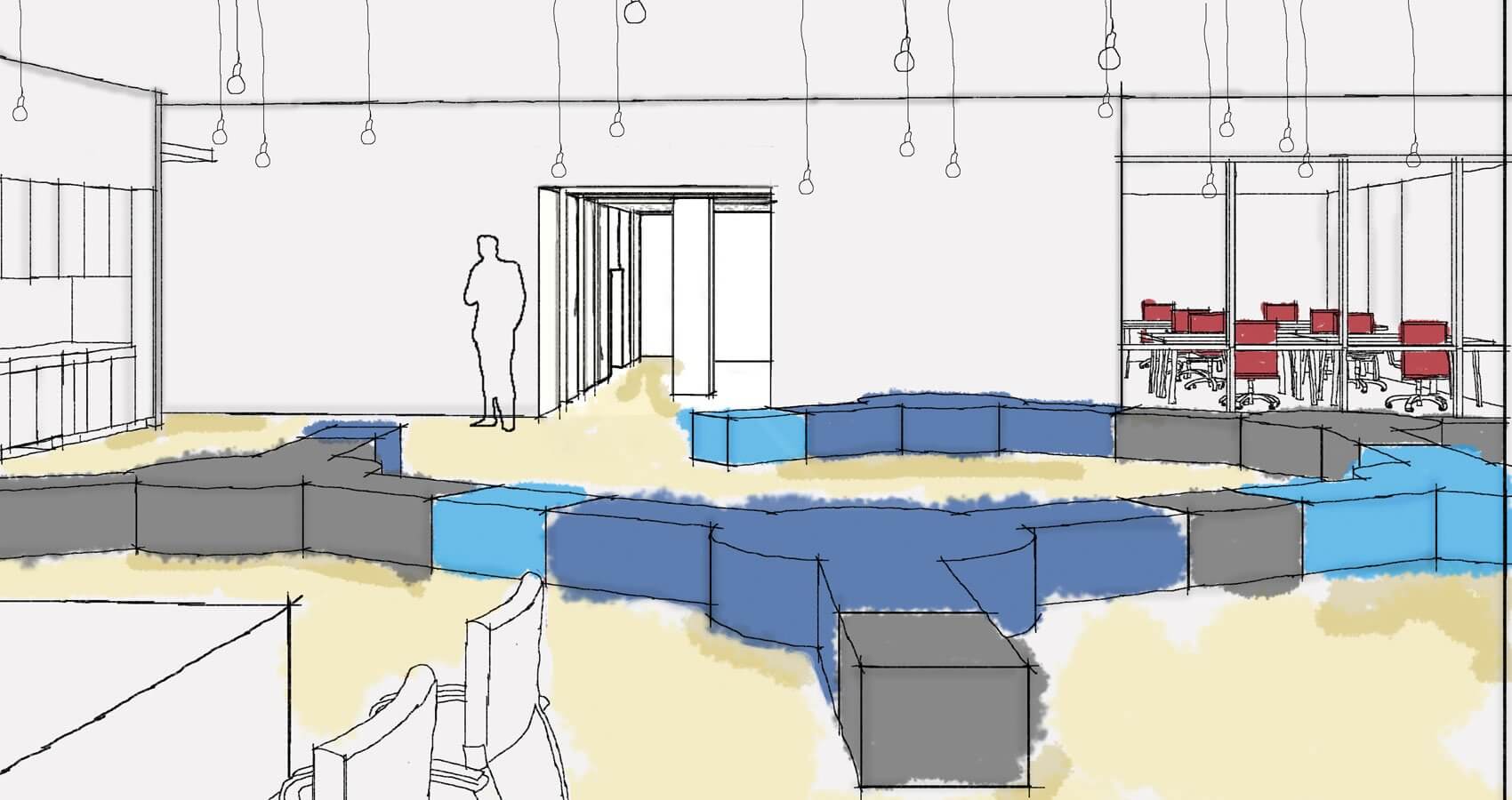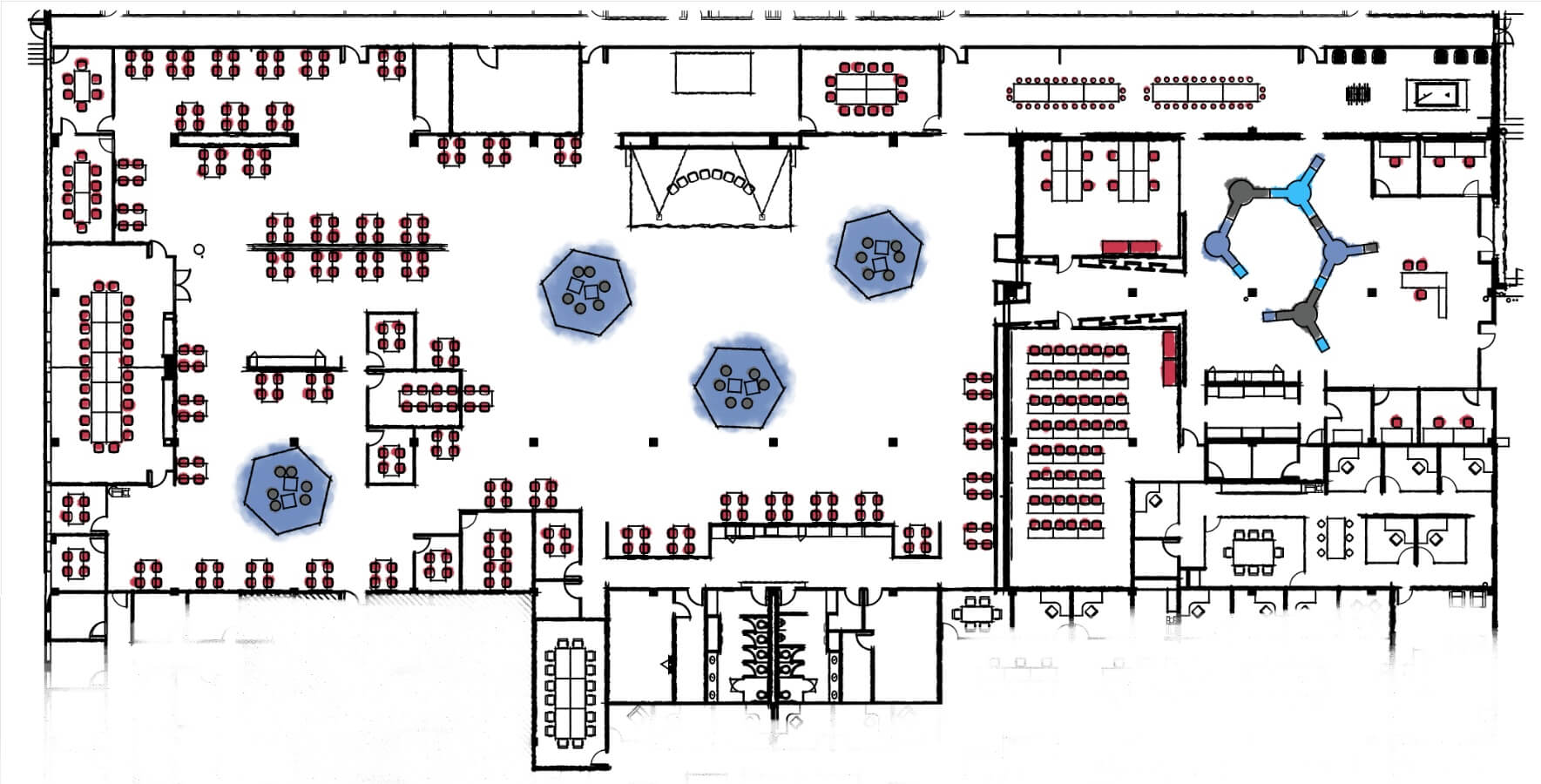Accelerating Innovation

Innovation is at the center of what happens every day across the medical center—physicians problem-solve to treat rare diseases, researchers work on developing new drugs, and college students dream up devices to help young people with mobility issues.
During last year’s strategic planning process, leaders from across the Texas Medical Center and Houston unanimously agreed that those great minds should have access to the resources and funding needed to help translate ideas into commercial products. Many exceptional inventors and entrepreneurs take their product ideas to the East or West Coast, where resources and funding are more readily available. And some great ideas never make it that far.
“While there have been great efforts to really help spur entrepreneurship in the city, very little money or resources have been dedicated to it in the same way as has been done in places like Boston, San Francisco, New York and Chicago,” said Texas Medical Center Executive Vice President and Chief Operating Officer, William F. McKeon.
“Studies show the ratio of research dollars spent to commercial dollars spent,” he said. “The top areas of the country—like California or Boston—have a 6-to-1 ratio or 8-to-11 ratio, respectively. Texas has a 24-to-1 ratio. So while we’re blessed by having this great campus with all these great assets, until now, we really had not dedicated the resources and time and money to coalesce that into one space.”
Some of the most renowned life science clusters in the world are home to successful accelerators and incubators, added McKeon. In order for the Texas Medical Center to fulfill its charter, and also help retain and attract new talent to the city, it became clear that the community would need to collaboratively develop the space and resources to help great ideas reach the market.
“As part of the strategic planning process, there were five institutes that were identified as really straw proposals, the areas where we knew great research institutions around the world were really driving hard,” said Texas Medical Center President and Chief Executive Officer Robert C. Robbins. “So we set out looking across these five institutes—genomics, health policy, innovation, regenerative medicine and clinical research—and innovation was rated as the most important to member institution leadership.”
The Innovation Institute design team was formed to help give shape to the vision.
“One of the recommendations that came from the strategic planning process was to create a space that would be a convening place for the bringing together of pharma with medical scientists and entrepreneurs,” said George McLendon, Ph.D., the Howard R. Hughes Provost and Professor of Chemistry at Rice University. McLendon served as co-chair of the Texas Medical Center’s Innovation Institute design team.
“So the Innovation Institute space is the physical embodiment of that vision,” he said. “As valuable as the space is, the people who create the innovation are the most important ingredient for success in building new companies that translate our basic research to sustainable clinical practice.”
The October 9 launch of the accelerator—known as TMCx—marked the first of many programs and offerings for the Innovation Institute. Housed on the John P. McGovern campus (in the former Nabisco factory), the accelerator will offer young companies the resources and expertise they need to help mature their ideas.
Building on models proven successful by other accelerators around the country, TMCx features an open-concept workspace for those accepted into the program. There is also a staff of advisors available to help support with everything from business planning and development to conducting a market analysis and securing venture capital. There will also be a fund set up to help financially support strong proposals. Each team’s unique needs will be identified upon their entry into the program.
“One thing that we’ve learned in an accelerator is that there is no such thing as a cookie cutter solution,” said McKeon. “Some companies have management with great business expertise, other companies may have a scientist that has no business experience but understands their technology better than anyone.
“So the first phase of an accelerator is to objectively assess and understand each company’s capabilities. Unlike almost all of the accelerators in the country, we do not take equity for the use of our space and resources. What we hope to see is that those companies who are successful with the help of TMCx will pay it forward. It’s very much about creating a community-minded approach.”
Texas Heart Institute Center for Technology and Innovation Director William Cohn, M.D., is well known for his work with heart assist and replacement devices, but many might be surprised to know that some of Cohn’s best ideas have come to life in a workspace in his home garage.
While Cohn has had great success with his work, there are many elements of commercialization that some innovators can never get past on their own—developing a business model, conducting a market analysis, finding investors, conducting clinical trials, filing for a patent. The demands can be daunting and time consuming, particularly for those whose innovations are side projects, worked on in their spare time.
“Even the greatest ideas can die in the minds of entrepreneurs who have never had the infrastructure or support to help them along,” said McKeon. “But on the other side of that, we see innovators here in the Texas Medical Center who have made remarkable strides with very limited resources.
“The fact that a great physician such as Dr. Billy Cohn is working out of his garage is emblematic of the problem. It means there are such great people who persevere to bring their ideas to market to benefit patients and their families that they will work out of their garages and out of their labs in places that are not really suitable to really do this in the best way possible,” he added. “It shows you the entrepreneurship that needs to be unlocked here in the community.”
Beyond TMCx, there are other programs in the works for the Innovation Institute, including a robust curriculum, and a bio-design program designed to target and address challenges faced by the medical community. The program will allow multidisciplinary teams to spend several months in hospitals within the medical center, identifying specific problems for which they can ultimately deliver tangible, real-world solutions—products, therapies or software. Similar programs are currently in place at Johns Hopkins University and Stanford University.
“We are doing this really for the best interest of Texas and going back to our founding charter, which was research, education and health in Texas,” said Robbins. “Those are the principles we were founded on and we believe we are moving even closer to our mission by bringing these resource to Texas.”
Click here to learn about some of the world-class innovators across the Texas Medical Center






